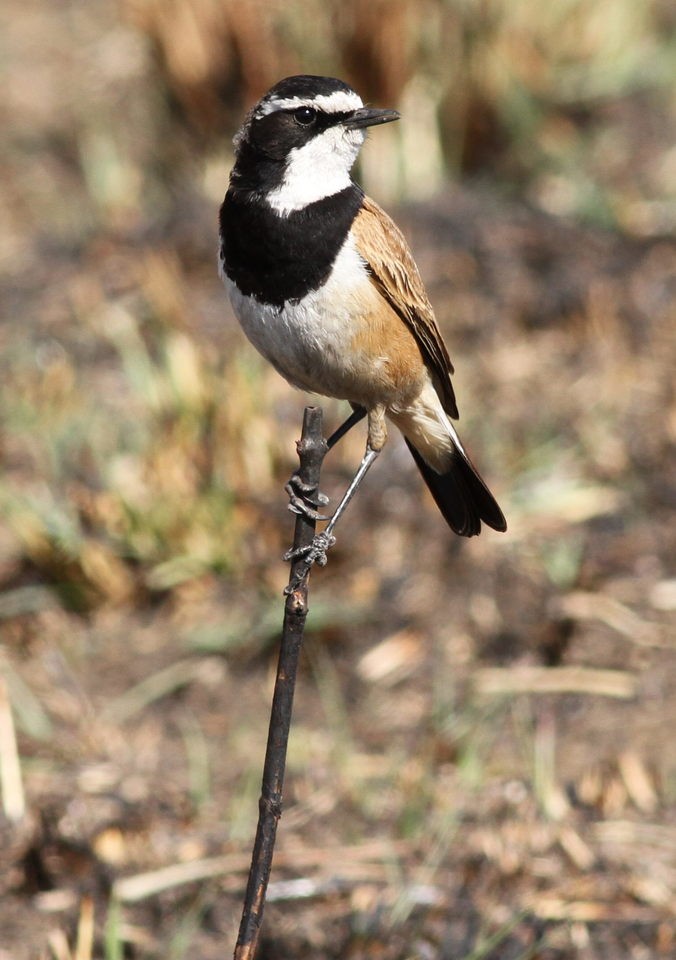Capped Wheatear
A species of Wheatears Scientific name : Oenanthe pileata Genus : Wheatears
Capped Wheatear, A species of Wheatears
Botanical name: Oenanthe pileata
Genus: Wheatears
Content
Description General Info
Description
The capped wheatear (Oenanthe pileata) is a small insectivorous passerine bird that was formerly classed as a member of the thrush family Turdidae, but is now more generally considered to be an Old World flycatcher, Muscicapidae. This wheatear is found in open dry sandy and stony habitats and short grassland with a few bushes and termite mounds in Africa, from Kenya and Angola south to the Cape. It is largely non-migratory, but undertakes seasonal movements. The capped wheatear is 17–18 cm long and weighs 32 g. Its legs and pointed bill are black. This common species is striking and unmistakable in appearance. The adult has a black cap, cheeks and breast band, and white eye stripe and throat. The rest of the underparts are white with buff on the flanks and lower belly. Like other wheatears, it has a distinctive tail pattern with a black feathers on the base and centre of the tail forming an inverted T against the otherwise white rump. The juvenile has a brown cap and cheeks, and the breast band is weak and diffuse. However, the breast band, larger size, and white at the base of the outer tail feathers distinguish it from the migrant northern wheatear, which is rare over most of the capped wheatear's range. The capped wheatear's song is a loud melodic warble interspersed with slurred chattering, and it has a chik-chik alarm call. It is monogamous and builds a nest of straw, grass, and leaves in a hole in the ground or a termite mound. It may use man-made drainage pipes if available. Typically three or four, sometimes more, eggs are laid. This solitary species feeds on insects, especially ants. Like other wheatears, it perches on mounds and hops over the short grass, or flies low over the ground. 
Size
17 cm
Nest Placement
Ground
Feeding Habits
Capped Wheatear primarily consumes arthropods, with a diet comprising ants, beetles, and insects like termites. Preferring ground foraging with rapid movements and using perches to scan for prey, capped Wheatear's unique diet includes a notable preference for worker ants.
Habitat
The capped Wheatear primarily resides in arid grasslands, often in regions affected by burning or grazing which provide open spaces with scattered vegetation and termite mounds. Its preferred terrains include semi-desert scrub, savannas, and various agricultural landscapes such as airfields, dry pans, and cultivated fields. This species is also known to inhabit grasslands in East Africa during breeding season, when the conditions are characterized by dying vegetation and burning processes.
Dite type
Insectivorous
General Info
Feeding Habits
Bird food type
Species Status
Not globally threatened.
Scientific Classification
Phylum
Chordates Class
Birds Order
Perching birds Family
Old world flycatchers Genus
Wheatears Species
Capped Wheatear 